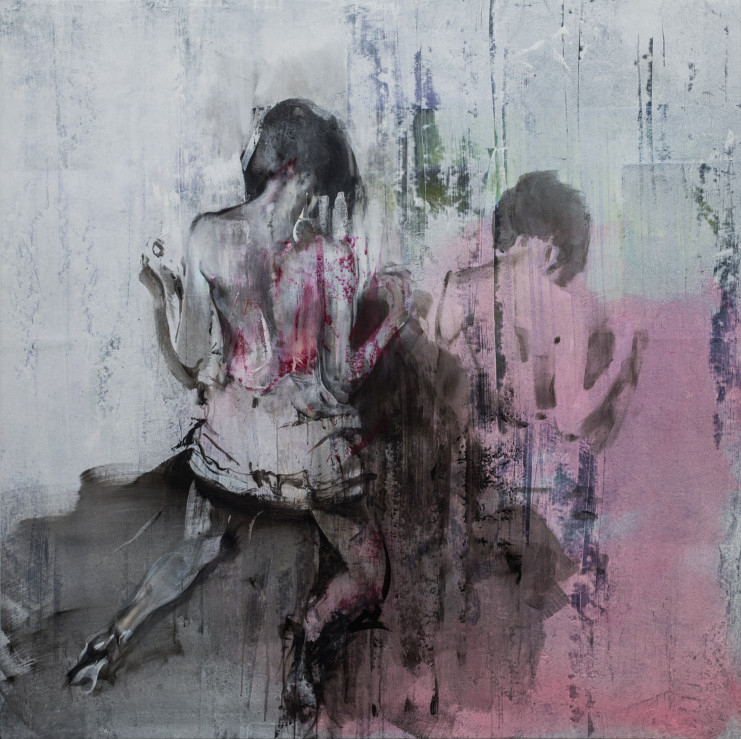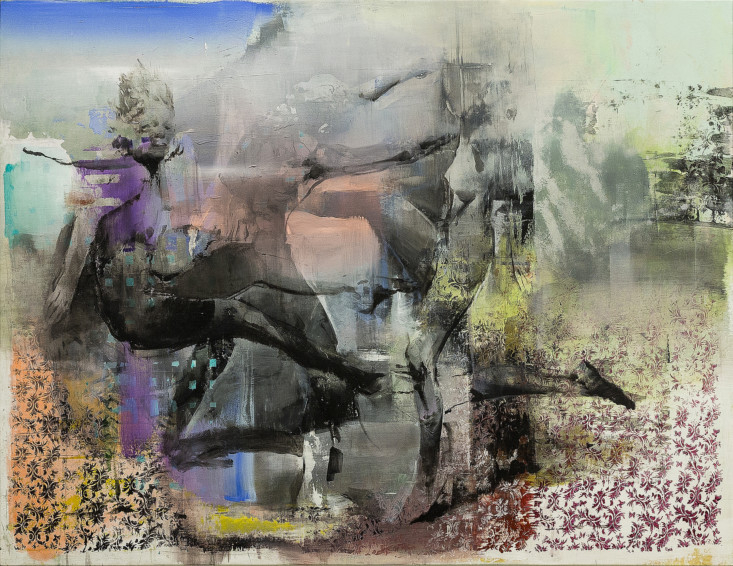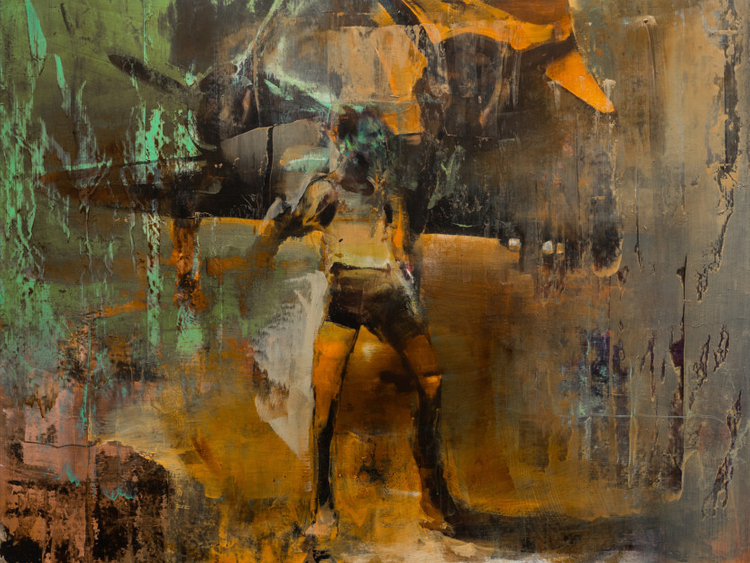
Hungarian artist Zsolt Bodoni is interested in exploring European history and the literature, art and music that have influenced European culture and history. Like an archaeologist, the artist delves deep into the archives, peeling back the layers, challenging generally accepted interpretations of events and redefining our understanding of past and present realities.
His latest exhibition in Dubai, “The Shining Path”, is inspired by the life and work of Hungarian dance artist and theorist Rudolf Laban (1879 to 1958). The show references the journey of this pioneer of modern dance who later became a Nazi sympathiser, to comment on the political and cultural history of Eastern Europe, as well as on contemporary global socio-political issues.
“The title of the show comes from the term ‘Gonzo journalism’, which is a style of journalism that is written without claims of objectivity, often including the writer as part of the story. The term was first used in 1970 to describe an article by American writer Hunter S. Thompson, and is a corrupted version of a French word that means ‘the shining path’. In this type of journalism, the perspective of the person who is telling the story is more important than the facts. And this is true of my paintings. They are based on my research of European history, but I have changed various elements to create an alternate reality and tell the story as I see it,” Bodoni says.
In his last exhibition in Dubai, the artist drew on his own memories of group activities and drills at school to speak about the indoctrination and rigid discipline imposed on people during the communist era that led to a loss of individuality and original thinking. He continues to explore this theme in his new paintings through figures and movements based on old photographs and films documenting Laban’s work.
“Laban questioned the traditional constraints against using one’s own body to show feeling, and did pioneering research on expressionist dance, as well as the relationship between the moving human form and the space around it. But what I found interesting is that in the 1930s he moved to Germany and became involved in doing propaganda for the Nazis. He also developed the art of ‘movement choir’, where large numbers of people moved together in a choreographed way, paving the way for the collective communist celebrations that I experienced in my school days.
“Later, Laban moved to the UK, where he did research on increasing the efficiency of workers in factories by eliminating unnecessary movements, which he called ‘shadow movements’. It is ironic and sad that the politicians used his creativity for their propaganda, and that a person who believed in freely expressing one’s emotions through movements, ended up restricting the movement of workers.
“My paintings are about the strange and meaningless way in which politics influences art; and about the many shadow movements in this world that must not be eliminated because they express individuality and are hence important elements of art and culture,” Bodoni says.
His monumental paintings depict figures of dancers in a variety of different movements that could be dance movements or shadow movements. Like the old, faded pictures they are based on, and like the images in our memory, they are hazy and mysterious.
Although Bodoni’s palette is much lighter than before, the atmosphere in the paintings is dark and strange. In some paintings, pretty patterns created with rubber stamps bought at a flea market are a reminder of the only way ordinary people in communist era Eastern Europe could decorate their homes. And warplanes in the background provide a historical context regarding the socio-political climate during Laban’s time.
All these elements come together to make a strong statement about the need for human beings to express their individuality, despite the systems, structures and events that restrict such expression.
“Laban’s original choreography was pure and in tune with nature. I wanted to depict the beauty, energy, freedom, expressiveness and lightness in those movements. But I also wanted the atmosphere in my paintings to convey a sense of foreboding that this would not last; and that it would be corrupted for a dark purpose. Although my paintings are based on Laban’s story, they convey my perception of the world. The things I am talking about are universal and have concerned human beings throughout human existence,” Bodoni says.
Jyoti Kalsi is an arts enthusiast based in Dubai.
“The Shining Path” will run at Green Art Gallery, Al Quoz until March 7.
A celebration of Dubai
London-based Pakistani artist Sarah Sheikh’s first solo exhibition in Dubai, “Ode to Dreamers”, is a tribute to this city and to those who envisioned it. Her abstract paintings depict the Dubai skyline, and the iconic buildings that define the spirit and energy of the city.
“I have often flown through Dubai during my travels, but had only seen the city from the aircraft. I loved the aerial views of the myriad shades of sand in the desert and the glittering lights of the city at night. Last year I finally got the opportunity to visit the city, and I was amazed to see this modern metropolis that is home to people from various countries and cultures. I have painted the skyline of London, New York and many other cities, but this is the most magnificent skyline I have ever seen. But even more impressive is the vision of the people who dreamt of building such a city of the future in the desert and have fulfilled that dream in such a short time. My paintings are a celebration of Dubai, and of all those dreamers who dare to dream big; who believe in their dreams; and have the will and determination to make them come true,” Sheikh says.
“Ode to Dreamers” will run at Baginskaya Gallery, JLT, until March 2.















